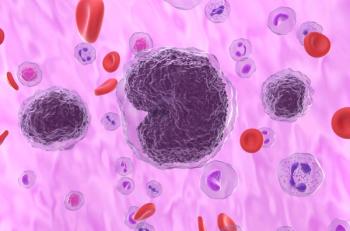
Population Carrier Screening Increases Prenatal SMA Diagnoses, Reduces SMA Births
Between the first introduction of population carrier screening in 2008 and its expansion to the full Israeli population in 2013, the mean rate of prenatal diagnoses per year was 4.66, and this rose to 7.75 between 2014 and 2017, a 66% increase.
Carrier screening for
Because of the high carrier frequency and the severity of SMA, several countries like Israel and the United States recommend screening. The American College of Medical Genetics and Genomics recommends routine screening in the general population. Over the last decade, Israel has adopted a population carrier screening for the disease, leading researchers to take a look at all cases of pre- and postnatal diagnoses of SMA between 2008 and 2017.
“Although the introduction of nusinersen together with the subsequent licensing of gene therapy and recently risdiplam provided much hope to families with an affected child, even with therapy, the burdens of SMA on the patient, the family, and the healthcare system are considerable,” wrote the researchers. “Moreover, early diagnosis, either prenatal or at least pre-symptomatic, and the early initiation of treatment are associated with a better prognosis. Thus, we believe that the availability of therapy does not nullify the need for prenatal diagnosis.”
According to the researchers, between the first introduction of population carrier screening in 2008 and its expansion to the full Israeli population in 2013, the mean rate of prenatal diagnoses per year was 4.66, which rose to 7.75 between 2014 and 2017, representing a 66% increase in diagnoses over the short period. These diagnoses resulted in less babies born with SMA, the researchers explained, as all prenatally diagnosed cases included in the study population resulted in termination of the pregnancy.
Although the 66% increase in prenatal diagnoses is notable, according to the researchers, there is still room for improvement based on the predicted annual number of SMA cases per year.
“Since SMA is an autosomal recessive disease, if both partners are carriers, there is a 25% risk of an affected fetus,” wrote the researchers. “On the basis of the calculated carrier rate and given the national average annual rate of 180,000 live births, the predicted rate of SMA diagnoses (homozygous individuals) was approximately 15 cases per year.”
The researchers also looked at the rate of postnatal diagnoses over the study period, finding that in this setting, the mean annual rate of postnatal diagnoses remained steady, with 7 diagnoses per year between 2008 and 2013 and 7.25 diagnoses per year between 2014 and 2017.
Reference
Ahorani S, Nevo Y, Orenstein N, et al. Impact of a national population-based carrier-screening program on spinal muscular atrophy births. Neuromuscular Disord. Published online December 1, 2020. doi:10.1016/j.nmd.2020.10.005
Newsletter
Stay ahead of policy, cost, and value—subscribe to AJMC for expert insights at the intersection of clinical care and health economics.













































